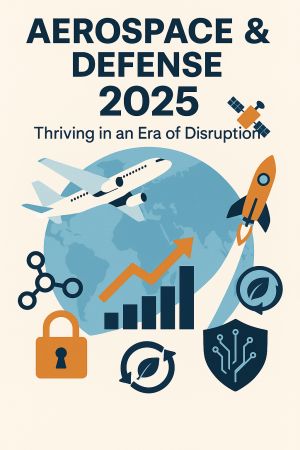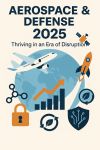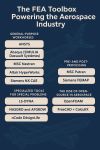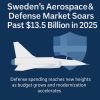The global aerospace and defense (A&D) sector is at an inflection point. On one hand, the industry is experiencing strong growth: Airbus and Boeing forecast more than 40,000 new aircraft will be built over the next two decades, while defense spending surged nearly 10% in 2024 — the sharpest increase in nearly forty years. On the other hand, the sector faces seismic disruption.
Geopolitical instability, fractured supply chains, sustainability pressures, and the rapid acceleration of digital technologies are reshaping the rules of the game. Traditional strategies are no longer enough. To succeed, A&D leaders must act with greater agility, innovation, and foresight than ever before.
Ten Forces Reshaping the Industry
Supply Chain Resilience – After years of globalization, A&D players are now prioritizing resilience. Nearshoring, diversification, and the use of AI, blockchain, and digital twins are becoming essential to monitor risk, ensure continuity, and meet sovereign security demands.
Next-Gen Competition – Barriers to entry are falling. Startups and SMEs, backed by record private capital, are scaling fast with additive manufacturing, dual-use technologies, and software-driven platforms. Agile disruptors are challenging incumbents for government and commercial contracts.
Digitalization – Decision-making speed is now a decisive advantage. Organizations are embedding AI, advanced analytics, and automation to enhance operations, streamline procurement, and deliver faster to the field. Those who fail to digitalize risk falling behind.
Workforce Transformation – Talent shortages have become a strategic risk. With over 40% of A&D executives reporting challenges in attracting skilled workers, companies must rethink hiring, invest in reskilling, and integrate workforce planning with business strategy.
The Space Economy – The commercialization of space is accelerating, from satellite networks to private launch services. This frontier presents opportunities for growth but requires new regulatory frameworks, public-private partnerships, and international collaboration.
Geopolitics – Trade wars, tariffs, and conflicts are forcing nations to prioritize industrial sovereignty. Shifts in alliances and export controls are rewiring global supply chains and investment flows, making geopolitics a central factor in corporate strategy.
R&D Innovation – Speed matters. Defense buyers are turning to “80% solutions” — adaptable, off-the-shelf systems that can be rapidly deployed — rather than waiting years for bespoke platforms. Software-defined defense and dual-use technologies are narrowing the gap between innovation and adoption.
Sustainability – Aviation and defense account for around 4% of global emissions. The challenge is delivering growth while reducing carbon intensity. Sustainable aviation fuels (SAF), circular manufacturing, and energy efficiency are advancing, but scaling solutions requires broad collaboration across governments and industry.
Strategic M&A – Consolidation is accelerating as players pursue scale, supply chain control, and innovation capabilities. Recent high-profile deals signal a wave of activity in subsectors such as drones, space systems, and cybersecurity.
Integrated Defense Domains – Future readiness depends on blending cyber, space, air, land, and sea operations. The integration of commercial and defense technologies is critical to achieving superiority in modern conflicts.
From Disruption to Leadership
What unites these trends is urgency. The pace of change is quickening, and hesitation carries real risk. The winners will be those who:
Embed resilience into supply chains and operations.
Accelerate digital adoption across the enterprise.
Invest in talent to build adaptable, tech-savvy workforces.
Pursue sustainability not as a compliance exercise but as a competitive differentiator.
Leverage partnerships and M&A to capture innovation at scale.





